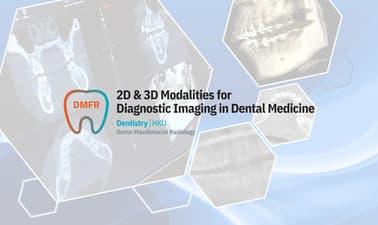MOOC List is learner-supported. When you buy through links on our site, we may earn an affiliate commission.

MOOC List is learner-supported. When you buy through links on our site, we may earn an affiliate commission.
Current guidelines, consensus, limitations, and potential future developments in dento-maxillofacial radiology (DMFR) for extra- and intraoral imaging modalities will be presented and critically discussed, including the issues related to radiation dose protection. The present MOOC has been designed to improve foundation knowledge but also to promote higher-order thinking skills such as collaboration, critical thinking, and problem-solving for experienced clinicians in various fields of dental medicine. The scientific leadership team and coordination of the MOOC will be based at HKU, Faculty of Dentistry. This course will feature an interdisciplinary team of renowned clinicians in their respective fields to discuss current guidelines, consensus, trends, and limitations in DMFR.
What you'll learn
Upon completion of the courses, learners will be competent in:
- Describing the indications and limitations of 2D extra-/intraoral imaging modalities
- Describing indications and limitations of 3D imaging
- Recognizing the anatomy and pathology in the radiological images
- Identifying the principles in radiation protection including low dose protocols
Syllabus
Module 1 / Week 1 - Image modalities in dento-maxillofacial radiology and aspects of radiation dose protection
1.1 – 2D and 3D imaging including extra-/ intraoral imaging – general indications and limitations
l Describe the types, indications and limitations of 2D dental imaging
l Describe the types, indications and limitations of 3D dental imaging
l Understand the selection of patients for dental radiographic examinations
1.2 - Radiation optimization
l Explain the differences between analogue and digital image receptors
l Illustrate the different digital image receptors
l Highlight the key concepts for radiation, radiation dose, radiation dose related risks
l Introduce the various acronyms and the concept behind them
Module 2 / Week 2: Basic image modalities in dental medicine subspecialities
2.1 – Operative dentistry
l Describe the diagnostic relevance of radiographs for operative dentistry
l Understand the diagnostic accuracy of different imaging types in detecting caries
2.2 – Periodontology
l Describe the diagnostic relevance of radiographs for periodontology.
l Understand the role of DMFR in diagnosis and management of complex periodontitis
2.3 – Periapical radiograph, occlusal radiograph, panoramic radiograph – indications and limitations for children in general
l Introduce the common indications and limitations of Intraoral and panoramic radiographs for children.
l Guideline on taking x-rays for children by American Academy of Pediatric Dentistry
2.4 – Cephalometric imaging – Indications and limitations for the orthodontist
l Introduce the indications and limitations of cephalometric analysis
l Introduce the basic landmarks and steps for cephalometric analysis
2.5 – Minor oral surgery
l Introduce the diagnostic imaging for Impacted teeth/third molars.
Module 3 / Week 3: Advance image modalities and Future technologies in dentistry
3.1 Introduction - CBCT
l Introduction of CBCT
3.2 Focus on CBCT
l Explain how the dose can be reduced during CBCT scan and introduce the research group of DIMITRA.
l Appreciate that CBCT radiation dose can be reduced for child patients
3.3 – Ultrasonography
l Introduce how ultrasonography can be used in dentistry
3.4 – MRI
l Introduce how MRI can be used in dentistry.
l Summarize the MRI use in dentistry
MOOC List is learner-supported. When you buy through links on our site, we may earn an affiliate commission.
MOOC List is learner-supported. When you buy through links on our site, we may earn an affiliate commission.
